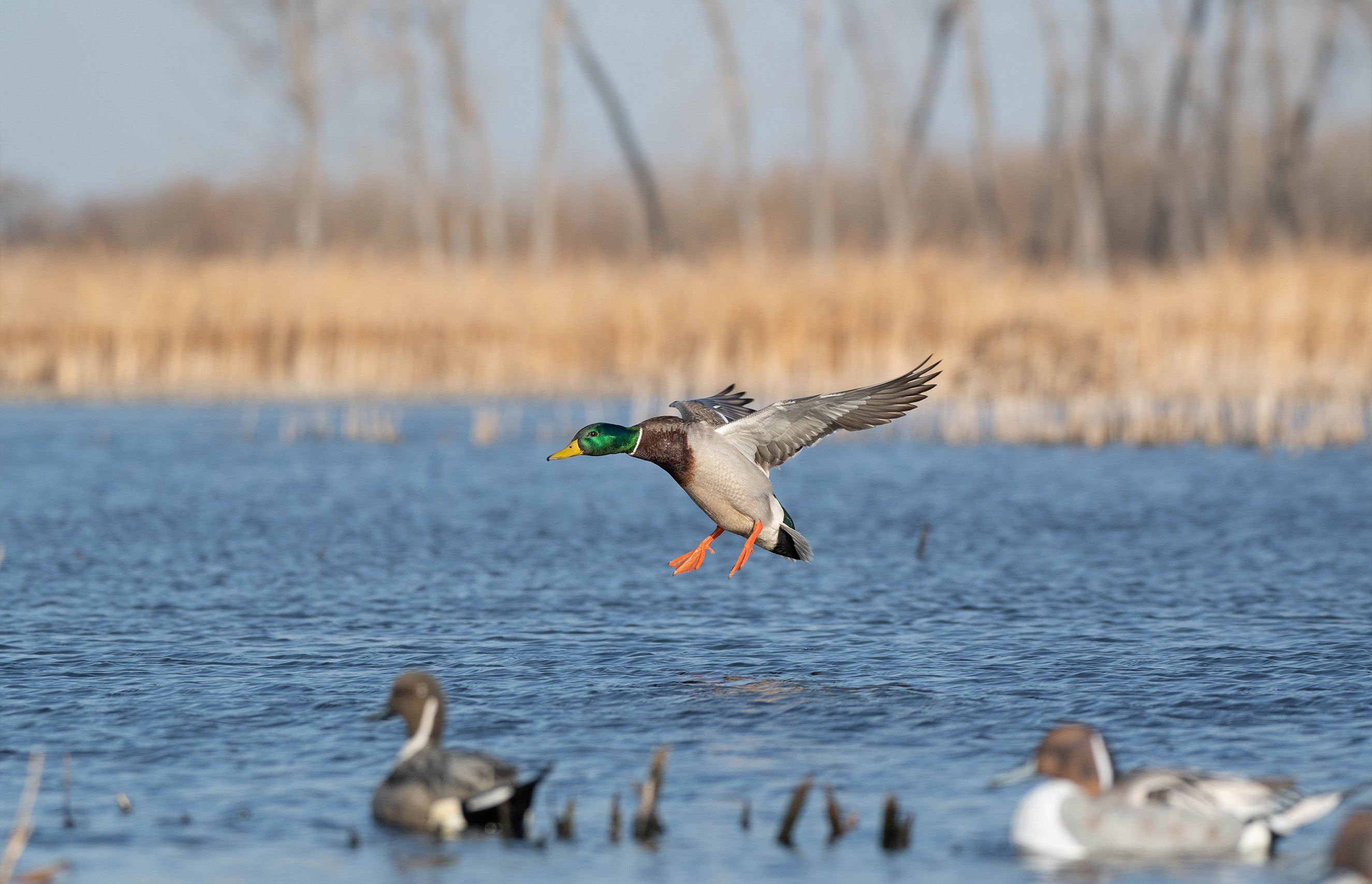How to Combine Duck Species for a Mixed Spread
Posted by Lucky Duck Team on Sep 25th 2024
Understanding Duck Behavior
When you’re out in the blind, waiting for the first light to break over the marsh, it’s easy to be all optimism and mentally estimate how many ducks we’ll get that day. But to consistently bring ducks into range, understanding their behavior is key—especially when it comes to mixing species in your decoy spread. Ducks are social creatures, and their behavior varies by species, weather conditions, and the precise time at the season you catch them in. That adds up to a lot of different variables, and really that’s just the beginning. But there’s one more we’d like to dig into: how different ducks react to other species.
In the wild, it’s common to see different duck species in the same body of water. Mallards might be seen swimming alongside pintails, while teal and gadwalls often share the same feeding grounds. This natural behavior is something that hunters can and should replicate in their decoy spreads. By mimicking these real-life scenarios, you create a setup that looks more safe and inviting to incoming ducks.
Mallards are often the dominant species in mixed groups, with other ducks like teal or pintails tagging along. This is because mallards are larger and more aggressive when it comes to feeding, so other ducks naturally follow them to find food. By placing mallard decoys at the heart of your spread and positioning smaller species around them, you simulate this natural behavior, increasing the chances that ducks of various species will commit to your setup. Similarly, mallards associate stronger, more aggressive geese with safety and are typically more likely to land if there are geese nearby.
As we all know, it’s not just about tossing different decoys into the water and hoping for the best. Ducks are smart, and they can quickly pick up on things that don’t seem right or don’t quite fit their natural inclinations. That’s why it’s crucial to pay attention to how ducks interact in the wild and replicate those dynamics in your spread.
Decoy placement is an art, and when you’re dealing with a mixed-species spread, there’s no substitute for experience when trying to build that perfect setup for each situation. The purpose of this guide is to give you a starting point or get you back on the right track with some pointers, but there’s no way to make this comprehensive without getting into book-length detail. So keep in mind that this is a starting point so you can go out and start learning specifically what works in your local area with the particular bodies of water that you have access to.
Choosing the Right Species for Your Spread
Selecting the right species for your decoy spread is all about understanding the birds you’re targeting and the environment you’re hunting in. Different species have different habits, preferred habitats, and social structures, all of which play a role in how they respond to your decoys.
If you’re hunting in an area dominated by mallards, it makes sense to include a healthy number of mallard decoys in your spread. But don’t stop there—mix in a few pintails or wigeon decoys, especially if you know those species are in the area. Male pintails, with their distinctive silhouettes and white chests, can be particularly effective at drawing attention from far-off birds, especially in open water.
For those hunting in larger bodies of water, adding divers like canvasbacks or redheads to your spread can make a big difference. A spread that includes both puddle ducks and divers can appeal to a broader range of ducks.
And don’t forget about the geese. Incorporating goose decoys into your spread can not only attract geese but can also serve as confidence decoys for ducks. Canada goose decoys, for instance, are large and visible, making them a strong attractant in mixed spreads. Ducks often view larger, more aggressive geese as a deterrent to predators, and they’ll be attracted to commit when they see a group of geese on the water.
Choosing the right species for your spread is a balance of understanding your local waterfowl population and using decoys that can attract a variety of ducks. By mixing species appropriately, you create a more natural and appealing setup that can decoy a more diverse array of birds into shooting range.
Balancing Visibility and Realism in Mixed Spreads
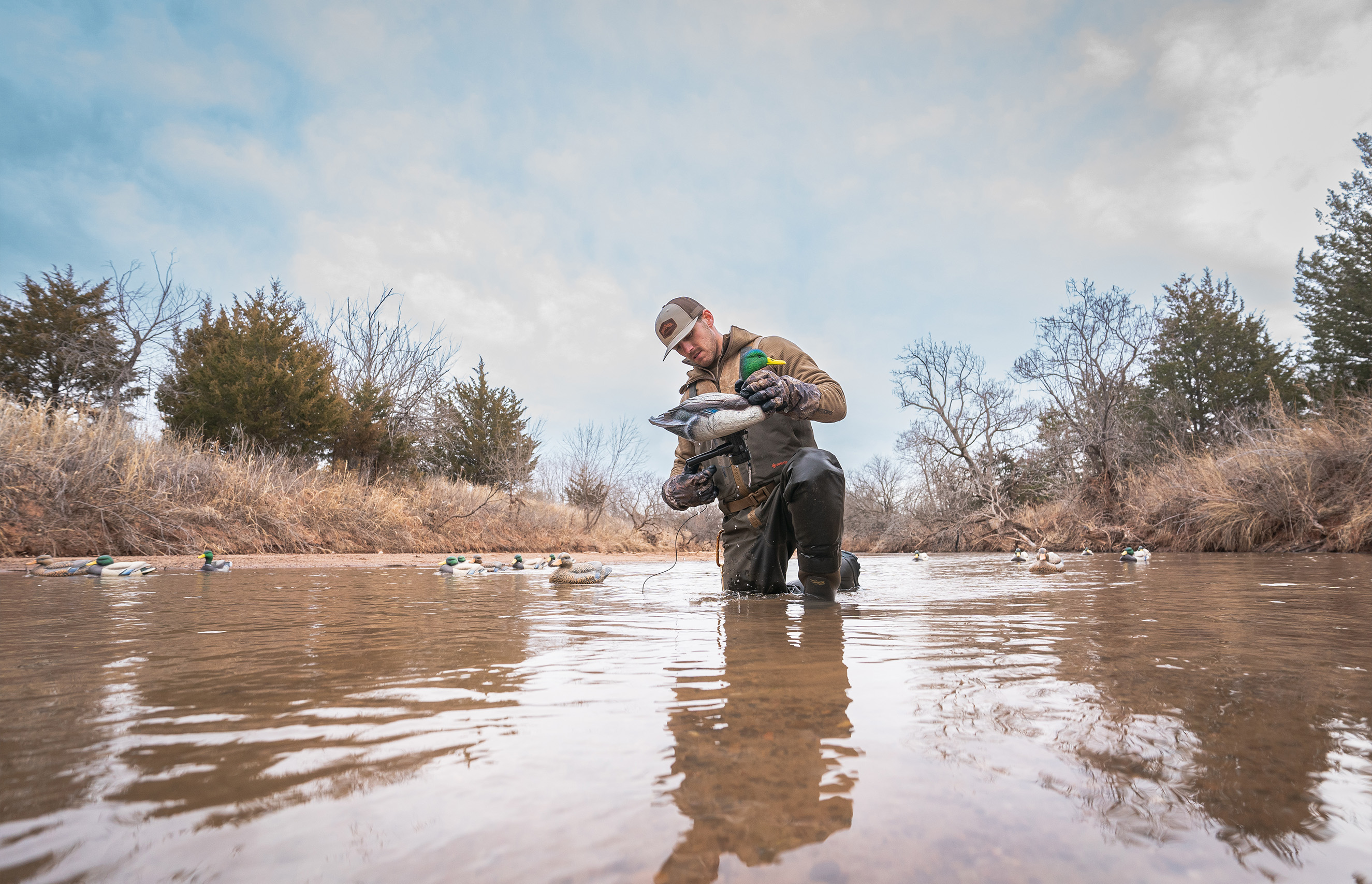
When it comes to crafting the perfect mixed-species decoy spread, striking the right balance between visibility and realism is key. You want your decoys to catch the attention of passing ducks from a distance while still looking natural enough to convince them to commit once they get closer.
Visibility is often achieved by using decoys that stand out against their surroundings. For instance, drake pintails and shovelers have bright white chests that can act as high-visibility markers in low light. Including these decoys in your spread can help attract ducks from far away, especially in large, open bodies of water. Position these highly visible decoys on the outer edges of your spread or in areas where you expect ducks to approach from a distance. This not only makes your spread more noticeable but also helps guide ducks into your landing zones.
However, visibility alone isn’t enough. Your spread also needs to look realistic to seal the deal. Ducks are naturally cautious, especially later in the season, so it’s essential that your decoys mimic the behavior and arrangement of real birds. This is where the realism factor comes in. Instead of just scattering decoys randomly, think about how ducks behave in the wild. For example, mallards might group together in the middle of your spread, while teal and wigeon could be positioned slightly apart in smaller pods, mimicking how these species often feed and rest in mixed groups.
To enhance the realism of your spread, consider incorporating Lucky Duck’s motion decoys. The incredibly lifelike movement of these decoys adds a great motion element to your spread, breaking up the static appearance that can keep ducks from committing. Motion decoys also help in creating the illusion of a live, safe, feeding flock, which can be especially effective in drawing in wary ducks.
By adding other duck species into your spread and increasing visibility, your new mixed decoy spread catches the eye of passing ducks and helps convince them to commit, bringing them right into your shooting range.
Integrating Goose Decoys Into Your Spread
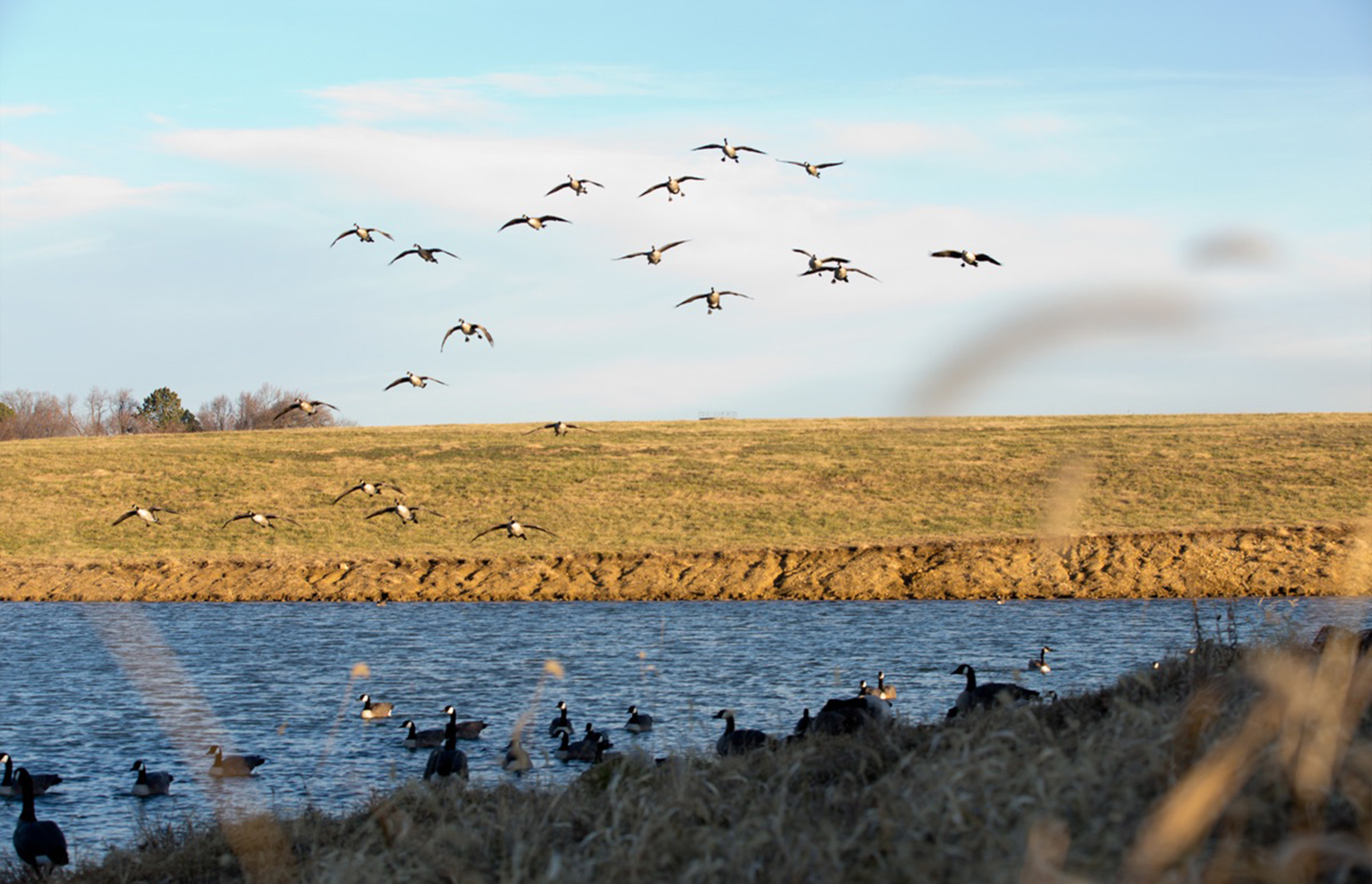
Adding goose decoys to your duck spread can be a game-changer. Ducks associated geese, particularly Canada geese, with safety. This makes goose decoys not only useful for attracting geese but also as confidence decoys for ducks.
Start by placing your goose decoys on the upwind side of your spread, slightly separated from your duck decoys. This separation mimics the natural behavior of geese and ducks, which often share the same areas but tend to keep a bit of distance from one another. For example, you might position a Lucky Agitator Goose with some static goose decoys in the deeper water, with your duck decoys closer to the shore. This setup creates a natural-looking scene that appeals to both ducks and geese.
Another strategy is to use goose decoys to create a visual barrier or “fence” on one side of your spread. This can help funnel ducks into a specific landing zone, making them easier to target. By placing goose decoys on the edges of your spread, you create a boundary that ducks will most likely avoid landing in, steering them toward the more open areas where your duck decoys are placed.
Finally, don’t be afraid to mix in a few duck decoys among your goose decoys, especially if you’re hunting in a field. Ducks will often land among geese in these environments, and having a few duck decoys mixed in can help create a more convincing setup. The key is to keep the spread looking natural and to use the goose decoys to your advantage, whether as attractants or as tools for guiding ducks into your preferred landing zones.
Adjusting Your Spread Based on Water and Land Elements
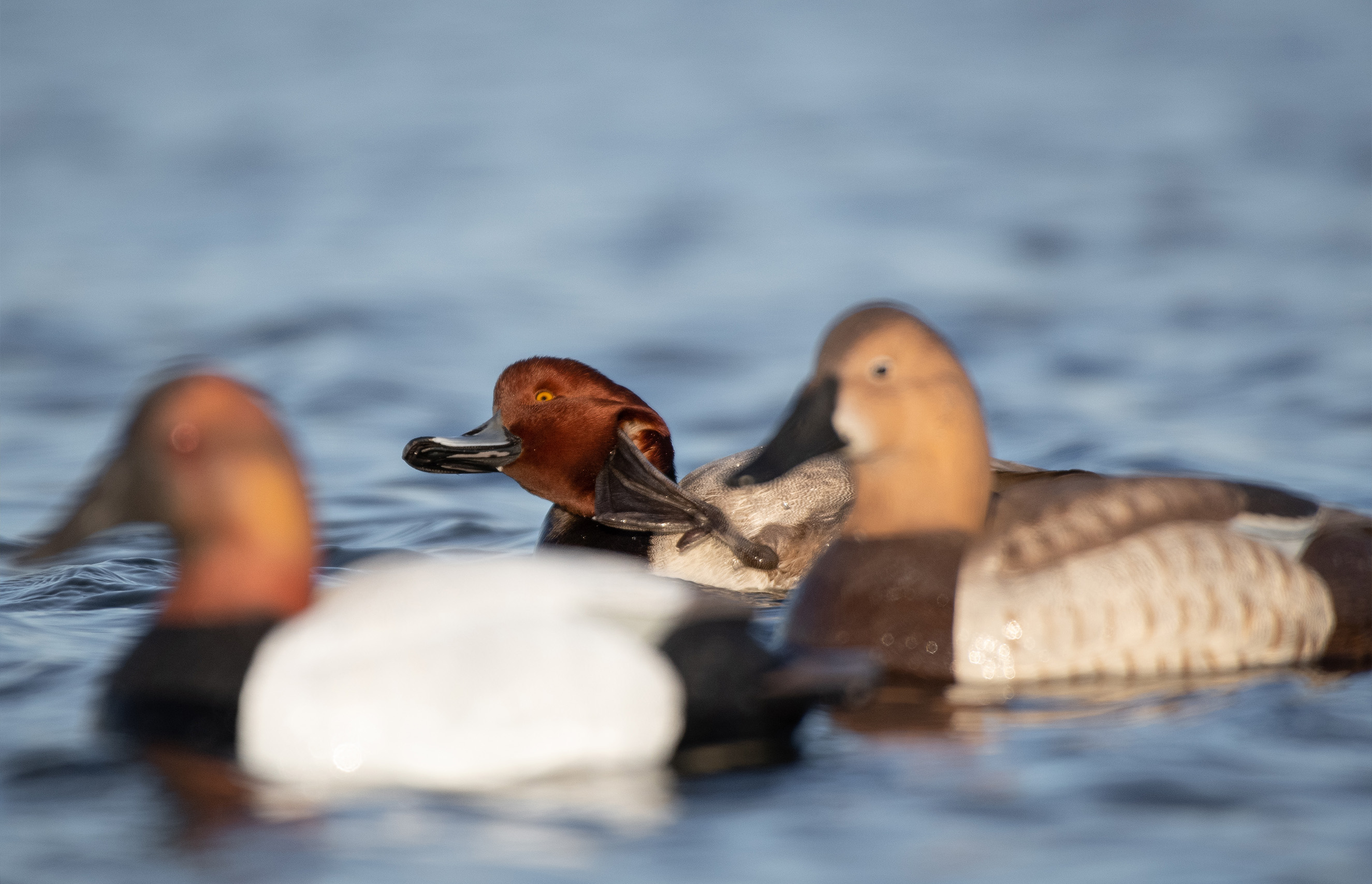
Every hunting environment is different, and the success of your mixed-species decoy spread often depends on how well you adapt to the specific water and land elements you’re working with. Whether you’re hunting over a small pond, a large lake, or a flooded field, adjusting your spread to fit the natural features of the area can significantly impact your success.
- Small Ponds and Marshes: In smaller bodies of water, space is limited, so your spread needs to be compact, so make each decoy count. Focus on placing your highest-quality decoys to guide ducks into key locations where you want them to land, such as along the edges of the water or in small open pockets. Use a mix of species that are common in these environments, like mallards, teal, and pintails, and position them to mimic natural groupings. Keep your spread tight enough to be sure there’s a clear landing zone for ducks to approach.
- Large Lakes and Open Water: When hunting over larger bodies of water, visibility is much higher and you also have more room to put out your spread. In these environments, you’ll want to use more decoys, including highly visible species like canvasbacks or pintails, to attract ducks from a distance. Use on-water motion decoys like the Super Swimmer HDI to add movement and break up the monotony of a large, overly motionless spread, making it more appealing to ducks flying overhead.
- Flooded Fields: Flooded fields offer a unique opportunity to mix duck and goose decoys effectively. In these areas, ducks and geese often feed together, so a mixed spread can be highly effective. Place goose decoys in the deeper sections of the field, with duck decoys where the water is shallower. This setup mimics the natural behavior of these birds and can draw in a variety of species. Additionally, consider using Lucky Duck spinning-wing decoys in these environments which can help attract birds from a distance.
- Wind and Water Movement: Always consider the wind direction and water movement when setting up your spread. Ducks and geese prefer to land into the wind, so position your decoys accordingly. Though motion is always good for adding realism, it’s particularly important In calm conditions to use motion decoys to create ripples and make your spread look alive to passing birds.
By adjusting your decoy spread to match the specific water and land elements of your hunting area, you can create a more effective setup that mimics natural behavior and draws ducks and geese into your shooting range.
Using Motion Decoys in a Multi-Species Spread
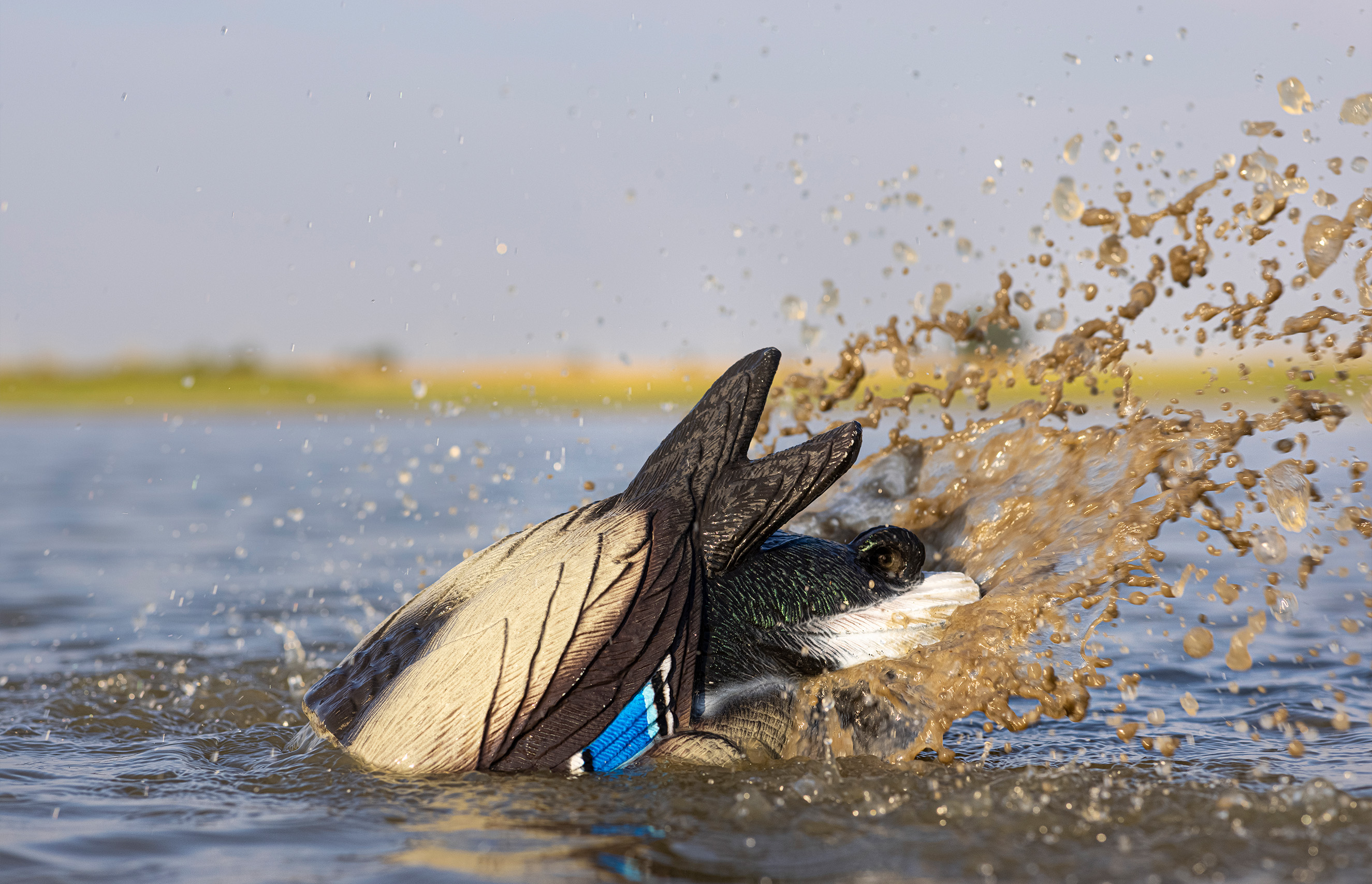
As any seasoned hunter knows, although location is the most important choice in determining a successful hunt, it’s not just about being in the right place at the right time—it’s about having the right setup. That’s where motion decoys come in. When used correctly, they can bring your decoy spread to life, making it irresistible to ducks and geese alike.
Motion decoys add the realism needed to convince even the wariest of ducks to commit. In a multi-species spread, they’re particularly effective because they simulate the natural movements that ducks and geese expect to see in a live flock. The key is to place these decoys strategically within your spread to mimic the behaviors of different species.
For instance, using the Lucky Duck on-water motion decoys closest to the kill zone of your spread creates the appearance of moving and active feeding, which can draw in other ducks looking to join the meal. The subtle ripples and swimming motion break up the static look of your spread, making it more realistic and lifelike.
Remember, the goal is to make your decoy spread look like a real, relaxed flock. By incorporating motion decoys strategically, you create an enticing visual that tempts those real ducks and geese into committing.
Building Your Perfect Mixed-Species Spread
Combining duck and goose species in your decoy spread is an art that, when done right, will increase your success in the field. By understanding duck behavior, carefully choosing and placing your decoys, adding motion decoys to bring your spread to life, and adapting your spread to different environments, you can create a setup that looks natural to a variety of ducks.
Whether you’re working with a large spread or making the most of a smaller setup, these tips will help you attract more ducks and improve your chances of a successful hunt. And as you refine your approach, don’t forget that the quality of your decoys plays a crucial role in the effectiveness of your spread.
Ready to take your hunting to the next level? Enhance your spread with the best decoys on the market. Explore Lucky Duck’s range of motion decoys and bring your decoy setup to life. Shop Lucky Duck Decoys Now!

